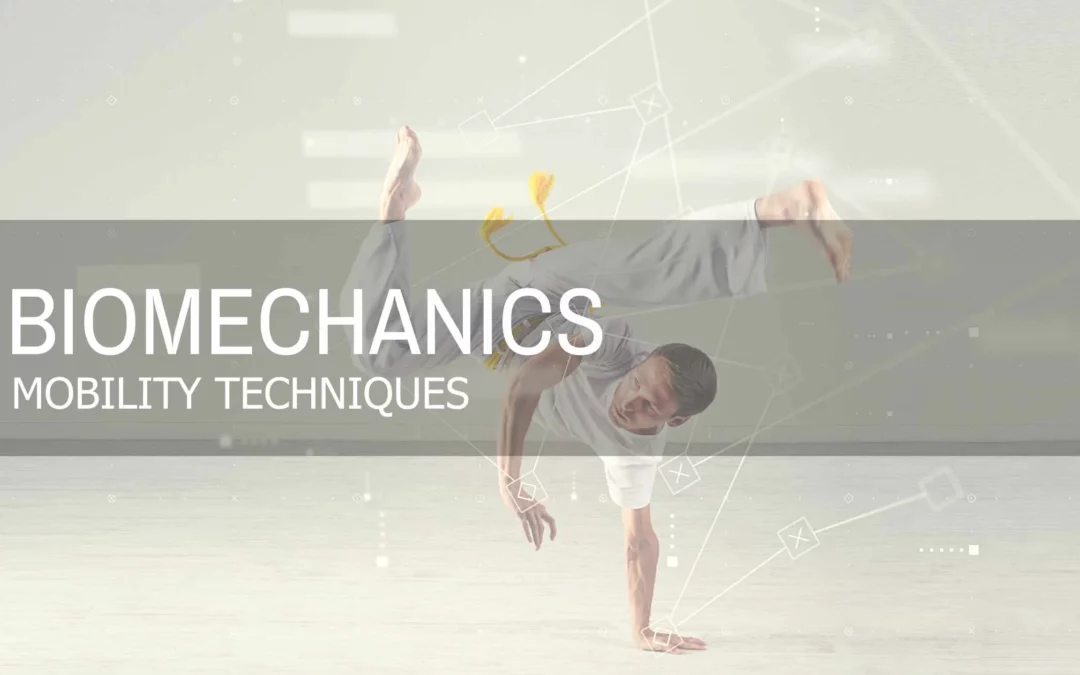What is Mobility?
Mobility is defined as the ability to actively move a limb through its full range of motion. Often confused, the term Flexibility on the other hand is defined as the ability of a muscle to extend passively through its range of motion. While the two are different, they are very much intertwined. Moreover, flexibility is a component of mobility, while joint (ligamentous) mobility, strength, and motor control are also components required for good mobility.
Why is mobility important?
Mobility is the basis of proper movement and, in a general sense, improves our joints’ and body’s ability to resist injury. Furthermore, studies have shown that reduced range of motion is a risk factor for overuse injury in athletes. Additionally, greater mobility creates the ability to move through better patterns, thus allowing for proper form during exercise.
How can I improve mobility?
There are a variety of ways to improve mobility, from static and passive techniques, to active, dynamic means.
Static mobility
This type of mobility technique involves sustained holds of greater than 10 seconds in an attempt to improve range of motion and decrease injury. It may also involve sustained pressure on localized areas of tension and increased muscle tone, otherwise known as trigger points. While this type of mobility technique has been shown to increase range of motion, it has also been shown to temporarily reduce strength, power, and performance and it is therefore not recommended as a warm-up prior to exercise but as a cool-down after physical activity.
Active Mobility
This technique, also referred to as dynamic stretching, involves a series of movements, often sport or activity specific, within the available range of motion necessary for the activity. Dynamic stretching helps to loosen the fibers within the joint and muscles required for a given movement, but does not impact the ballistic or elastic properties of the tissues. Therefore, dynamic stretching is preferred during warm-up and prior to exercise.
Myofascial Release
The ideas of mobility and flexibility generally revolve around the idea of muscle tension and elasticity, however, there are many other tissues that impact the ability of a joint to move freely including nerves, blood vessels, ligaments, and fascia. Fascia is a type of connective tissue that surrounds all of the body’s structures. The fascia that surrounds the muscles is known formally as myofascia. Moreover, another technique for increasing mobility is called myofascial release, focusing on sustained pressure on myofascial trigger points. When this sustained pressure is paired with joint movement, it is referred to as active myofascial release. The mechanism for how myofascial release increases mobility is not fully understood but it is thought that in the presence of trauma or inflammation fascia will increase its tension and reduce pliability, and with sustained pressure on these areas of increased tension, receptors in the tissue send signals to the nervous system to restore a more relaxed, organized structure.
Proprioceptive Neuromuscular Facilitation (PNF) Stretching
One of the main components of static stretching and mobility is muscle relaxation as well as the ability of the nervous system to prevent a stretch reflex counter-acting the movement. One way to encourage muscle relaxation and thus improve stretch is the use of proprioceptive neuromuscular facilitation (PNF). While there are a variety of PNF techniques, the most commonly used method is known as contract-relax in which the individual will stretch the targeted muscle to its limit, then they will contract the muscle and hold for a period of about 6 seconds, after which they relax completely and then stretch the muscle to its limit again. This process is generally repeated for 2-3 reps. There are many mechanisms proposed for how PNF works. In general it is thought that specific receptors known as golgi tendon organs are stimulated by an undesirable stimulus (stretching) and by contracting the target muscle, these receptors are inhibited for a short period of time.
References
-
- Faigenbaum AD, Myer GD. Resistance training among young athletes: safety, efficacy and injury prevention effects. Br J Sports Med. 2010;44(1):56-63. doi:10.1136/bjsm.2009.068098
- Hindle KB, Whitcomb TJ, Briggs WO, Hong J. Proprioceptive Neuromuscular Facilitation (PNF): Its Mechanisms and Effects on Range of Motion and Muscular Function. J Hum Kinet. 2012;31:105-113. doi:10.2478/v10078-012-0011-y
- What is Fascia? (n.d.). Retrieved October 27, 2020, from https://www.myofascialrelease.com/about/fascia-definition.aspx
- Wilson JM, Hornbuckle LM, Kim JS, Ugrinowitsch C, Lee SR, Zourdos MC, Sommer B, Panton LB. Effects of static stretching on energy cost and running endurance performance. J Strength Cond Res. 2010 Sep;24(9):2274-9. doi: 10.1519/JSC.0b013e3181b22ad6. PMID: 19918196.




